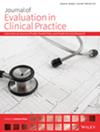Low Back Pain Presentation and Management at the Emergency Department: Differences Between Older Adults Residing in the Community and Aged Care Homes
Abstract
Rationale
In healthcare systems without gatekeeper access to Emergency Departments (ED), the number of people presenting for low back pain (LBP) is increasing substantially. Low back pain presentations at the Emergency Department are rarely caused by serious underlying pathology, and management often deviates from practice guidelines. Older adults (≥ 65 years) constitute approximately 30% of all ED LBP presentations. Little is known about differences in presentation characteristics and ED management between older adults from aged care homes and those living in the community.
Aims and Objectives
This study aimed to identify differences in presentation and management between people presenting at the ED for LBP from aged care homes versus those residing in the community.
Methods
Retrospective observational study of routinely collected healthcare data and chart audits of older adults from aged care homes (N = 64) and age and sex-matched community-dwelling older adults (N = 64) presenting to ED for LBP.
Results
Patients from aged care homes presented with more comorbidities (4 vs. 2), analgesic medication (84% vs. 70%) and polypharmacy (86% vs. 41%) and were more commonly admitted for ongoing analgesia or further diagnostic tests. Community-dwelling older adults were more frequently admitted for Allied Health input. ED administration of opiates was high for both groups (81% aged care; 91% community-dwelling). High rates of lumbar spine medical imaging (61% aged care; 50% community-dwelling) resulted in few acute radiographic findings.
Conclusions
Older patients presenting to ED for LBP receive similar management regardless of their residential status. Hospital management of both groups does not align with current published recommendations namely in respect to imaging and pain medication.

 求助内容:
求助内容: 应助结果提醒方式:
应助结果提醒方式:


